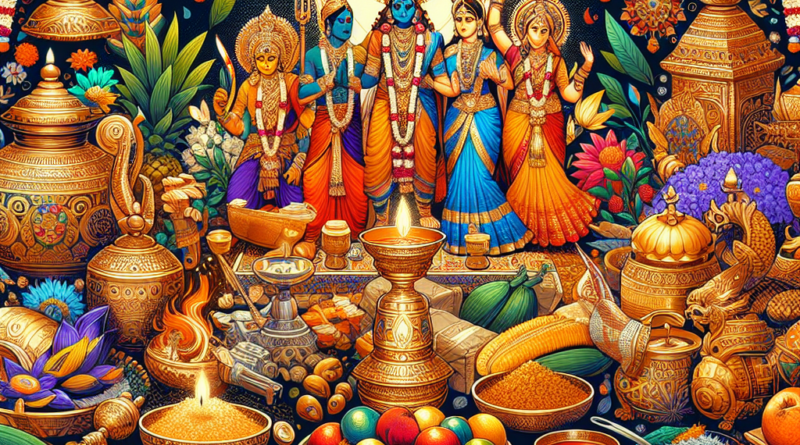Vibrant celebrations: Hindu festivals in full swing
Title: The Rich Tapestry of Hindu Festivals: Exploring the Cultural Significance in Hindu and Rajput Traditions
Hindu festivals in full swing
Hindu festivals are an integral part of India’s cultural heritage, reflecting the diverse traditions and beliefs of its people. Amongst the various communities in India, the Rajputs hold a significant place, with their unique customs and rituals adding a rich layer to the tapestry of Hindu festivals. In this article, we delve into the historical context and contemporary relevance of Hindu festivals, with a focus on the cultural significance in Hindu and Rajput traditions.
Historical Context:
The roots of Hindu festivals can be traced back to ancient times, with many of them having mythological origins. These festivals are deeply intertwined with Hindu religious texts and epics such as the Ramayana and the Mahabharata. For the Rajputs, who are known for their valor and chivalry, festivals hold a special place as they often commemorate the bravery and sacrifices of their ancestors.
One such festival is Holi, the festival of colors, which is celebrated with great enthusiasm across India. For the Rajputs, Holi holds a special significance as it commemorates the victory of good over evil, with the burning of the demoness Holika symbolizing the triumph of righteousness. The festival also celebrates the love between Lord Krishna and Radha, with Rajputs often organizing grand processions and cultural performances to mark the occasion.
Another significant festival for the Rajputs is Navratri, a nine-night festival dedicated to the worship of Goddess Durga. During Navratri, Rajputs engage in elaborate rituals and ceremonies to honor the divine feminine energy, known as Shakti. The festival also includes traditional dance forms such as Garba and Dandiya, which are an integral part of Rajput culture and heritage.
Contemporary Relevance:
In contemporary times, Hindu festivals continue to play a vital role in fostering a sense of community and cultural identity among the people. For the Rajputs, these festivals serve as a reminder of their rich heritage and traditions, helping to preserve and pass on their cultural legacy to future generations.
One such festival that exemplifies this is Diwali, the festival of lights, which symbolizes the victory of light over darkness and good over evil. For the Rajputs, Diwali is a time for family gatherings, feasting, and exchanging gifts, strengthening bonds and fostering a sense of unity within the community.
Similarly, festivals like Raksha Bandhan, where sisters tie protective threads around the wrists of their brothers, and Teej, a festival celebrating marital bliss and the monsoon season, hold special significance for Rajputs, emphasizing the importance of family ties and traditional values.
Conclusion:
In conclusion, Hindu festivals hold a special place in the hearts of the people, reflecting a deep connection to their cultural roots and religious beliefs. For the Rajputs, these festivals are not just occasions for revelry and merrymaking but are also a way to honor their ancestors, preserve their heritage, and strengthen their sense of community. By understanding the historical context and contemporary relevance of Hindu festivals, we can appreciate the rich tapestry of traditions that continue to thrive in the vibrant tapestry of Indian culture.

